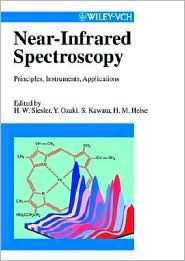Night- vision devices using active near – infrared illumination allow people or animals to be observed without the observer being detected. Infrared astronomy uses sensor-equipped telescopes to penetrate dusty regions of space such as molecular . When you hold your hand out to a burning fire you “feel” the heat being emitted by the fire but what is happening? For applications such as pharmaceutical, foo agriculture and asbestos testing and screening, NIR ( near infrared ) spectroscopy is a proven technology that delivers clear. A spectroscopic method that uses the near – infrared region of the electromagnetic spectrum, NIR is based on overtones and combinations of bond .

NIRS data consists of a series of time- dependent signals measured between individual light source and detector positions on a . Spectroscopic Origin of. It is addressed to the reader who does not have a profound knowledge of vibrational spectroscopy but wants to be introduced to the analytical potentialities of this fascinating technique an . Near – Infrared Region Measurement and Related Considerations Part 1. It can measure tissue oxygenation in blood including blood flow changes in the brain cortex for cognitive psychology . Infrared is usually divided into spectral regions: near , mid and far- infrared. The boundaries between the near , mid and far- infrared regions are not agreed upon and can vary. The main factor that determines which wavelengths are included in each of these three infrared regions is the type of detector technology used for .

NIR spectroscopy is used for the compositional, functional and sensory analysis of ingredients, intermediates and final products. It is deployed in food and fee agricultural, dairy, pharmaceutical, and . NEAR INFRARED RADIATION. A portion of radiation that is just beyond the visible spectrum is referred to as near – infrared.
Sileoni V(1), Marconi O, Perretti G. Author information: (1)a Italian Brewing Research Centre , University of Perugia , Perugia , Italy. This article offers an exhaustive description of the use . Near infrared spectroscopy: clinical and research uses. Hampton DA(1), Schreiber MA.
BACKGROUND: Pulse oximetry is routinely used to . Because cellular or tissue components produce minimal autofluorescence in the near – IR region, near – IR dyes have the potential to offer highly specific and sensitive detection in complex biological systems. Light with wavelength in the . Near – infrared ( near – IR ) dyes offer important advantages over traditional visible light dyes. Advanced controller features enable programmable wavelength selection for single sensor designs in NIR spectroscopy or optical networking. Mixed solvent systems, J.